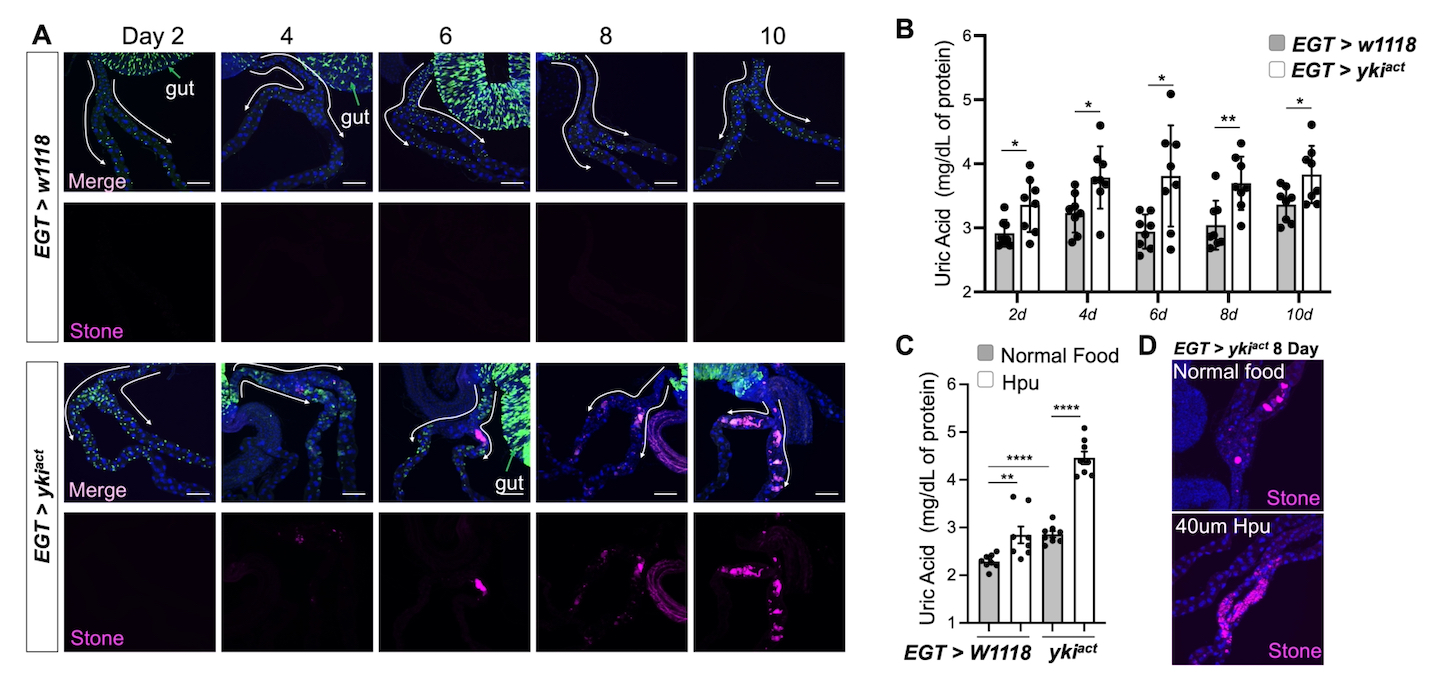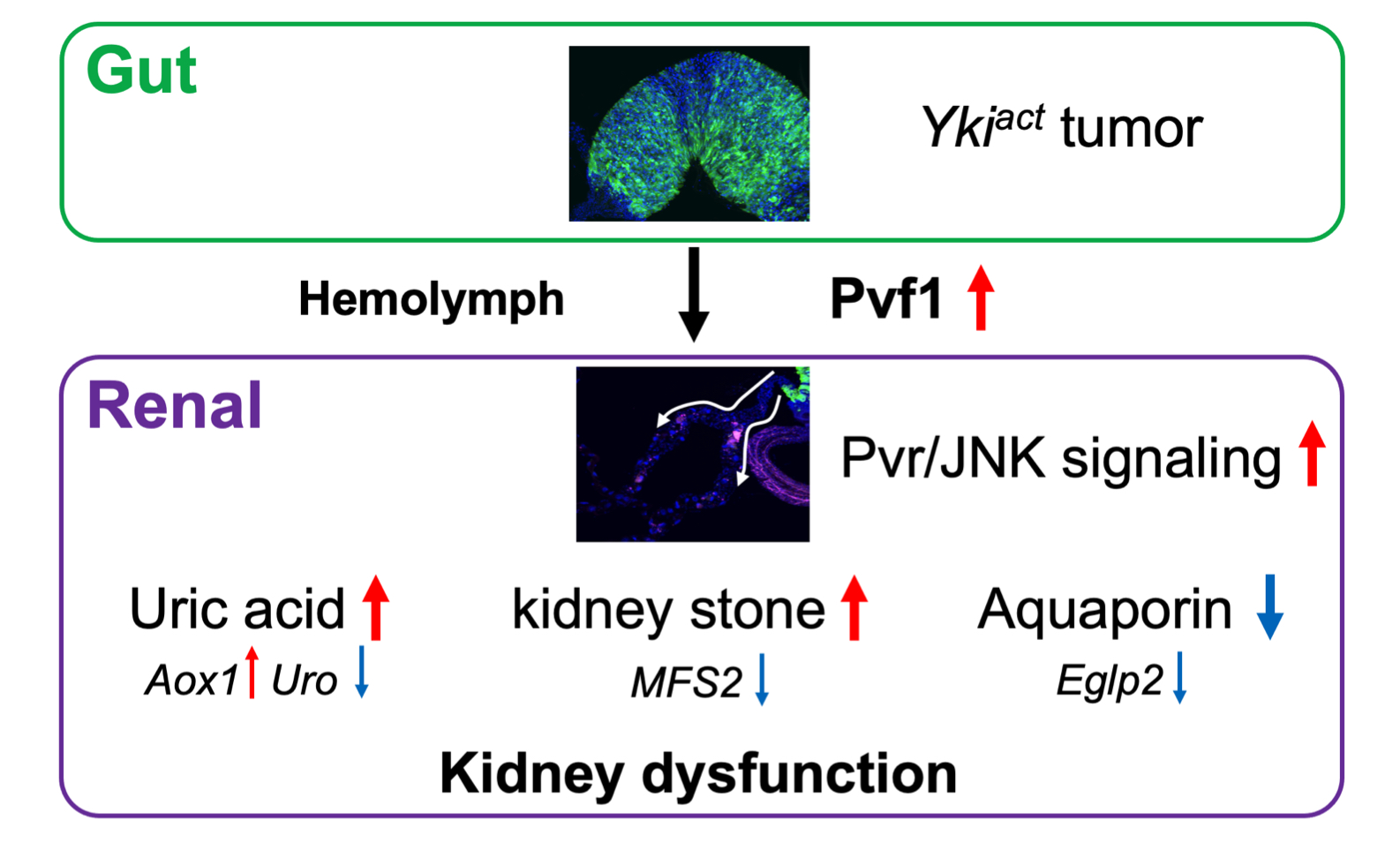Research Identified the Molecular Mechanism of Renal-intestinal Axis Communication in Insect
Research group of Insect Organs Development and Communication, led by Prof. Jun XU from Center for Excellence in Molecular Plant Sciences of the Chinese Academy of Sciences (CAS) and Prof. Norbert PERRIMON from Harvard University, have discovered a novel communication mechanism between the gut and kidney, the gut tumors secreted Pvf1 activates the PvR/JNK/Jra signaling pathway in the kidney, leading to paraneoplastic renal syndrome-like phenotypes. The research article entitled “Mechanistic characterization of a Drosophila model of paraneoplastic nephrotic syndrome” was published online in Nature Communications on February 9th, 2024.
Drosophila has emerged as a simple and powerful model to identity pathogenic tumor-host interactions. The fly has organs that are functionally equivalent to human organs, including digestive tract, liver, adipose tissue, and kidney, and a number of models have been established to study organ-specific disorders triggered by tumors. For instance, elevated JAK-STAT signaling in a fly tumor model disrupts the blood-brain barrier leading to death. In addition, two tumor-secreted factors, Unpaired 3 (Upd3) and PDGF- and VEGF-related factor 1 (Pvf1), target host muscle and fat body to stimulate body wasting, which is reminiscent of cachexia. In this study, leveraging a Drosophila gut tumor model, the authors demonstrate that tumor-secreted Pvf1 stimulates PDGF/VEGF signaling in the fly malpighian tubules (MTs), a renal system functionally equivalent to the vertebrate kidney, leading to formation of kidney stones, ascites/bloating, and uric acid accumulation. Importantly, these renal phenotypes contribute to increased mortality of flies with gut tumors. Altogether, these data suggest that tumors remotely induce renal dysfunction through hijacking of normal signaling pathways, which represents an underappreciated effect of paraneoplastic renal syndromes. The authors describe an important mechanism by which gut tumors perturb the function of the kidney, which might be of clinical relevance for the treatment of paraneoplastic syndromes.

Figure 1. EGT > ykiact gut tumor triggers kidney stone formation and uric acid (UA) accumulation.
Figure 2. Model of ykiact gut tumor induced renal dysfunction.
Professor Jun Xu and Dr. Ying Liu from Harvard University are the co-first authors of this paper. Professor Jun Xu, Dr, Ying Liu and Professor Norbert Perrimon are the corresponding authors of this paper. This study was funded by the start-up fund of the Center for Excellence in Molecular Plant Science of the Chinese Academy of Sciences, Finnish Cultural Foundation (Suomen Kulttuurirahasto), Cancer Research UK, the National Cancer Institute of the United States, and HHMI.
Contact:
Dr. Jun Xu, Professor
CAS Key Laboratory of Insect Developmental and Evolutionary Biology, Center for Excellence in Molecular Plant Sciences, Chinese Academic of Sciences

